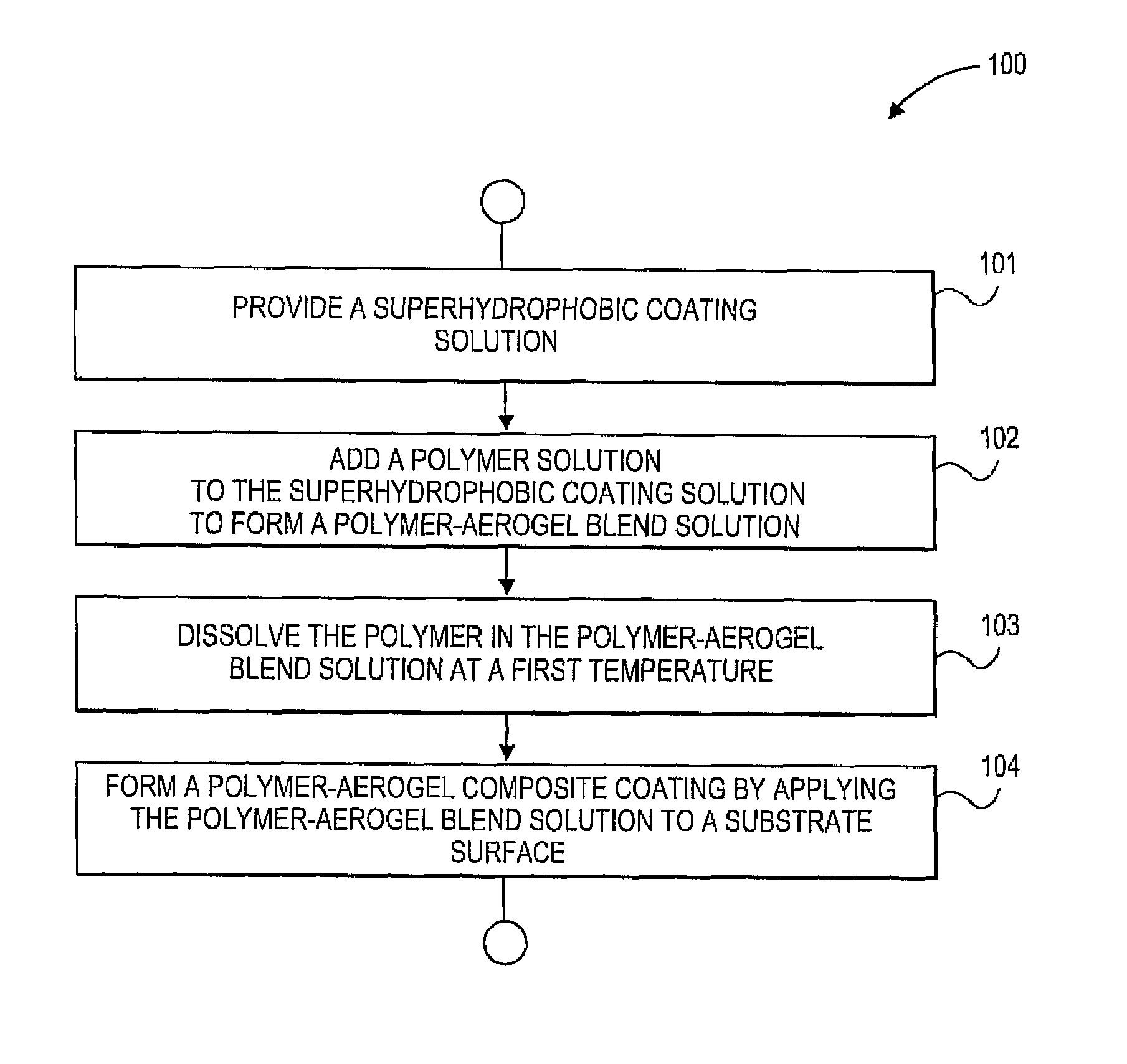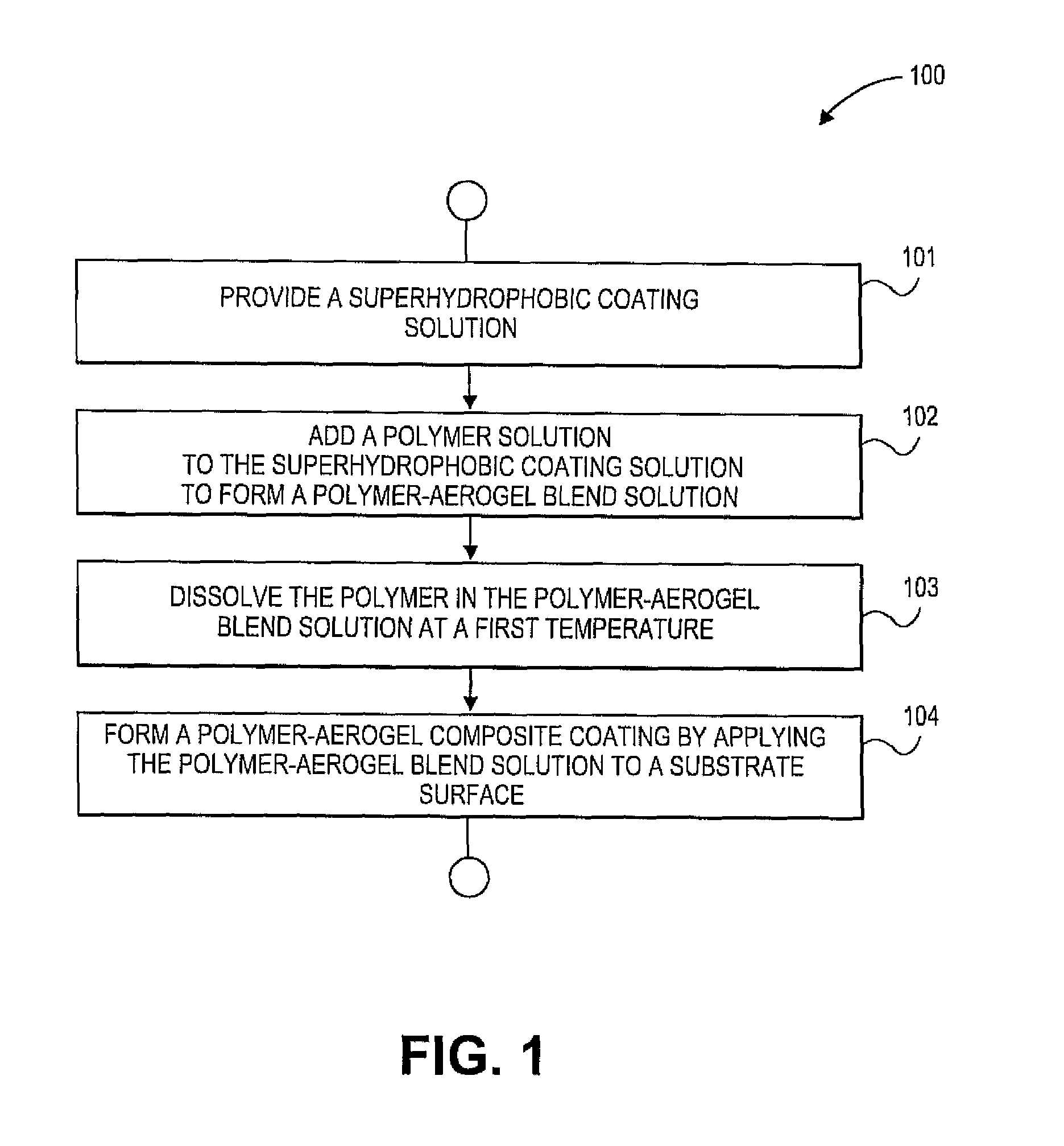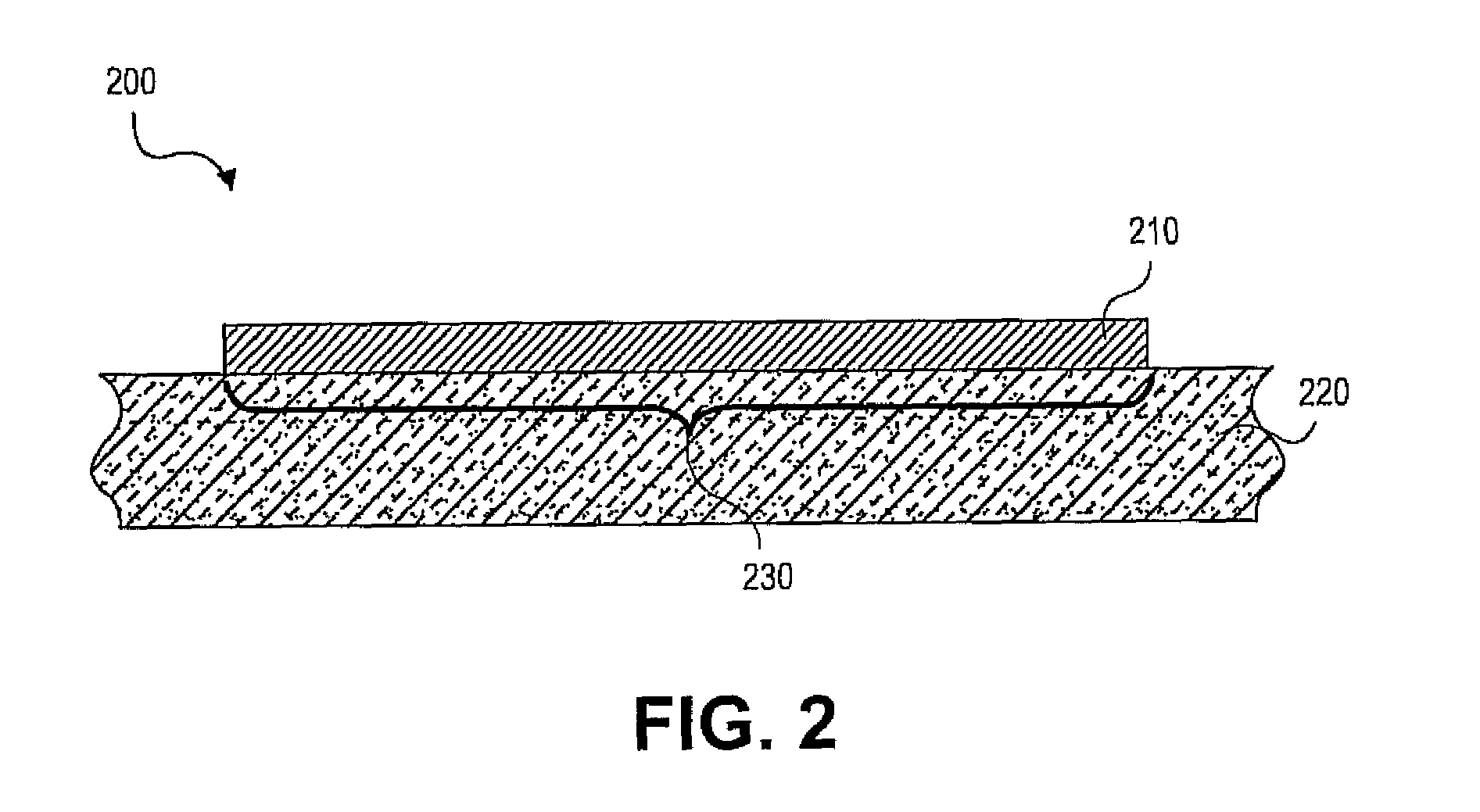Durable polymer-aerogel based superhydrophobic coatings, a composite material
a composite material and polymer-aerogel technology, applied in the direction of liquid/solution decomposition chemical coating, diffusing elements, spectral modifiers, etc., can solve the problems of inability to achieve the effect of aerogels, lack of durability of conventional aerogels, and inability to manufacture cost-effectively
- Summary
- Abstract
- Description
- Claims
- Application Information
AI Technical Summary
Benefits of technology
Problems solved by technology
Method used
Image
Examples
example 1
Preparation of Polymeric Component, poly(methyl methacrylate) for the Polymer-Aerogel Composite
[0032]The polymer, poly(methyl methacrylate) was prepared in about 25 ml scintillation vial without a cap. Methyl methacrylate was polymerized thermally using azobisisobutyronitrile (AIBN) as an initiator and dodecanethiol as a chain transfer agent to skew the resulting molecular weight distribution. The weight fractions of the reagents used to prepare the polymer are given in Table 1.
[0033]
TABLE 1Material Nameweight fractionMethyl methacrylate0.982800Azobisisobutyronitrile (AIBN)0.009828Dodecanethiol0.007371
[0034]After thorough mixing of the regents, the solution was set on a hot plate at a temperature of about 170° C. For UV-curing, roughly the same weight fraction of photoinitiator was used and out gassing followed by nitrogen purging was done. After polymerization, the polymer was dissolved in toluene followed by filtration and precipitation in ethanol for removal of residual monomer. ...
example 2
Formation of Superhydrophobic Coating Solution
[0035]
TABLE 2Material Namevol. fractionfor 100 mL gel volumeMethanol0.0832 vol / vol 8.32 mLTetramethylorthosilicate (TMOS)0.0989 vol / vol 9.89 mLDionized Water0.8155 vol / vol81.55 mL1.0N Hydrochloric Acid (HCl)0.0024 vol / vol 0.24 mL
[0036]Combined the reagents given in Table 2 according to the order in which they are listed. Agitated the reaction mixture and placed at about 50° C. for a period of approximately 120 hours. Upon the completion of the reaction, a gel was formed. The gel had an opaque appearance and was rather firm. Broke up the gel with a clean utensil (e.g. stir rod, spatula, etc.) and added approximately 100 ml of hexane to the broken gel in the reaction vessel. Allowed solvent exchange for at least 30 minutes at about 50° C. After solvent exchange period, removed excess hexane with a glass pipet and / or syringe and repeated the hexane wash at least once more. After draining excess hexane, the gel was placed in a cold storage i...
example 3
Preparation of Polymer-Aerogel Composite Coating
[0037]In an about 25 ml scintillation vial, added the superhydrophobic coating solution of Example 2 at a volume fraction of about 0.8696. Added the polymer / toluene solution of Example 1 at a volume fraction of about 0.1304 to the superhydrophobic coating solution of Example 2 to form a polymer-aerogel blend solution. Heated the polymer-aerogel blend solution to about 50° C. and agitated until the polymer was dissolved. Applied the polymer-aerogel blend solution to a substrate surface while keeping the polymer-aerogel blend solution 50° C. to ensure proper dispersion of the polymer within the aerogel matrix. After coating, the substrate was heated at a temperature in the range of about 180° C. to about 200° C. for at least about 2 minutes to form a polymer-aerogel composite film having a thickness of about 144 nm. The as is polymer-aerogel composite film showed a water contact angle of about 159.40° and 159.30°. After destructive weari...
PUM
| Property | Measurement | Unit |
|---|---|---|
| molar ratio | aaaaa | aaaaa |
| temperature | aaaaa | aaaaa |
| porosity | aaaaa | aaaaa |
Abstract
Description
Claims
Application Information
 Login to View More
Login to View More - R&D
- Intellectual Property
- Life Sciences
- Materials
- Tech Scout
- Unparalleled Data Quality
- Higher Quality Content
- 60% Fewer Hallucinations
Browse by: Latest US Patents, China's latest patents, Technical Efficacy Thesaurus, Application Domain, Technology Topic, Popular Technical Reports.
© 2025 PatSnap. All rights reserved.Legal|Privacy policy|Modern Slavery Act Transparency Statement|Sitemap|About US| Contact US: help@patsnap.com



